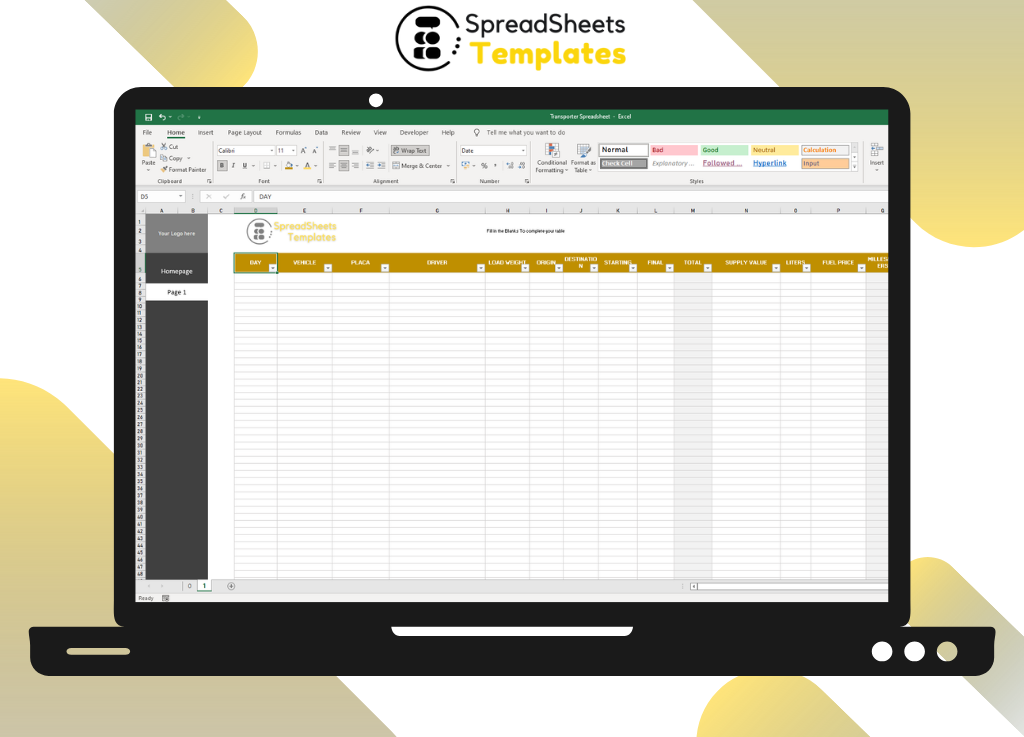Carrier Control Worksheet Leave a comment
Optimizing Your Shipping Operations
Introduction
In the world of logistics and supply chain management, efficiency is the key to success. Every step in the shipping process plays a crucial role in ensuring timely delivery and customer satisfaction. One powerful tool that can significantly streamline your shipping operations is the Carrier Control Worksheet. In this article, we will explore the concept of the Carrier Control Worksheet, its benefits, and how you can leverage it to enhance your shipping processes.
What is a Carrier Control Worksheet?
A Carrier Control Worksheet is a comprehensive document that serves as a centralized source of information for managing your carrier relationships and optimizing your shipping activities. It provides you with a structured framework to track and analyze various aspects of your shipping operations, such as carrier performance, costs, transit times, and service levels.
The Importance of the Carrier Control Worksheet
Streamlining Carrier Selection (?)
Selecting the right carrier for your shipments is crucial for ensuring timely and cost-effective deliveries. The Carrier Control Worksheet allows you to compare different carriers based on their performance metrics, pricing structures, and service levels. By having all the relevant information in one place, you can make informed decisions and select the carrier that best fits your specific shipping requirements.
Enhancing Performance Monitoring (?)
Monitoring carrier performance is essential to identify any bottlenecks or areas of improvement in your shipping operations. The Carrier Control Worksheet enables you to track key performance indicators (KPIs), such as on-time delivery rates, transit times, and claims ratios. By regularly analyzing this data, you can identify trends, address issues promptly, and optimize your overall performance.
Managing Costs Effectively (?)
Shipping costs can have a significant impact on your bottom line. The Carrier Control Worksheet allows you to monitor and analyze your shipping expenses, including freight charges, accessorials, and fuel surcharges. By having a clear overview of your costs, you can identify cost-saving opportunities, negotiate better rates with carriers, and implement strategies to optimize your shipping spend.
Improving Customer Satisfaction (?)
In today’s competitive market, meeting customer expectations is crucial for business success. The Carrier Control Worksheet helps you track the transit times and service levels provided by different carriers. By selecting carriers that consistently meet or exceed your customers’ expectations, you can enhance customer satisfaction and build long-term relationships.
Implementing the Carrier Control Worksheet
Now that we understand the significance of the Carrier Control Worksheet, let’s explore how you can implement it within your shipping operations.
Step 1: Gather Carrier Information
The first step is to gather comprehensive information about the carriers you work with. This includes their contact details, service offerings, pricing structures, transit times, and any special requirements they may have. You can create a table within your Carrier Control Worksheet to organize this information systematically.
Step 2: Define Key Performance Indicators
Identify the key performance indicators that are relevant to your shipping operations. These may include on-time delivery rates, claims ratios, transit times, and customer feedback. By defining these metrics, you can effectively track and evaluate carrier performance.
Step 3: Monitor Carrier Performance
Regularly update your Carrier Control Worksheet with the latest data on carrier performance. This can be done manually or by integrating your shipping software with the worksheet. Analyze the data to identify any areas of improvement and take necessary actions to address them.
Step 4: Evaluate Costs and Negotiate Rates
Use your Carrier Control Worksheet to monitor shipping costs and identify cost-saving opportunities. Compare the rates offered by different carriers and negotiate better terms based on your shipping volumes and requirements. This can help you optimize your shipping spend and improve your profitability.
Step 5: Continuously Improve
The Carrier Control Worksheet is not a one-time implementation. It should be a dynamic tool that evolves with your business and changing shipping requirements. Regularly review and update the worksheet to ensure it remains aligned with your goals and objectives.
FAQs about Carrier Control Worksheets
Q1: How can a Carrier Control Worksheet help me save money?
A1: A Carrier Control Worksheet allows you to analyze and compare shipping costs across different carriers. By identifying cost-saving opportunities and negotiating better rates, you can optimize your shipping spend and improve your bottom line.
Q2: Can I use the Carrier Control Worksheet for all types of shipments?
A2: Yes, the Carrier Control Worksheet can be used for various types of shipments, including small parcels, LTL (Less than Truckload), and FTL (Full Truckload). It provides a centralized platform to manage and optimize your carrier relationships.
Q3: Is it necessary to update the Carrier Control Worksheet regularly?
A3: Yes, regular updates are essential to ensure the accuracy and effectiveness of the Carrier Control Worksheet. As carrier performance and shipping requirements may change over time, updating the worksheet helps you stay informed and make informed decisions.
Q4: How can the Carrier Control Worksheet improve customer satisfaction?
A4: By monitoring carrier performance and selecting carriers that consistently meet or exceed your customers’ expectations, you can ensure timely deliveries and enhanced service levels. This, in turn, leads to improved customer satisfaction and loyalty.
Q5: Are there any software tools available to automate the Carrier Control Worksheet?
A5: Yes, several shipping software solutions offer features to automate carrier performance tracking and cost analysis. These tools can integrate with your Carrier Control Worksheet, saving you time and effort in data entry and analysis.
Q6: Can the Carrier Control Worksheet be customized based on my specific shipping requirements?
A6: Absolutely! The Carrier Control Worksheet is a flexible tool that can be tailored to your unique shipping needs. You can add or remove columns, include additional KPIs, and modify the layout to suit your preferences.
Conclusion
In the fast-paced world of logistics, optimizing your shipping operations is crucial for success. The Carrier Control Worksheet serves as a valuable tool to streamline your carrier relationships, monitor performance, manage costs, and enhance customer satisfaction. By implementing this comprehensive document within your shipping processes, you can achieve greater efficiency and drive your business forward.


